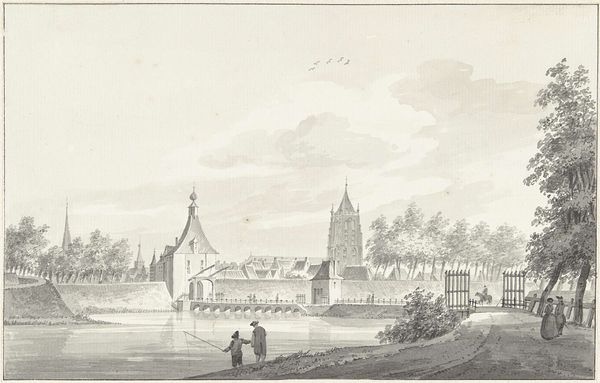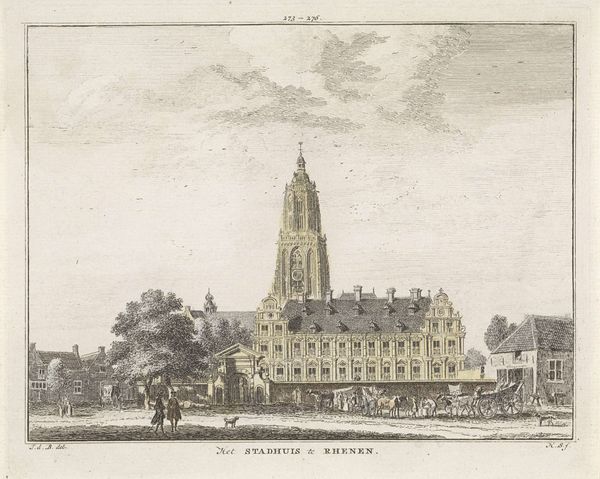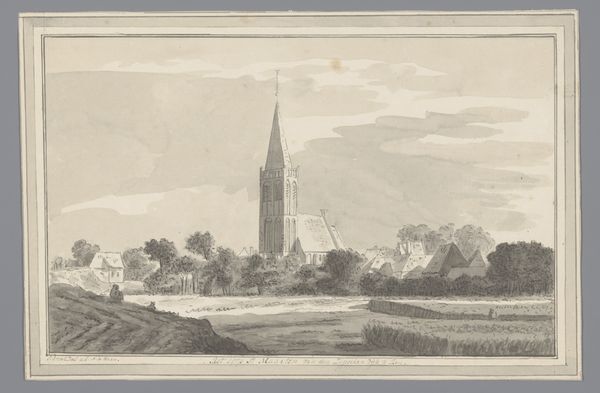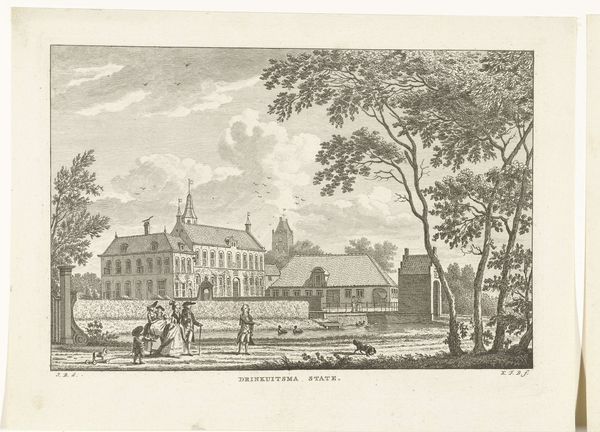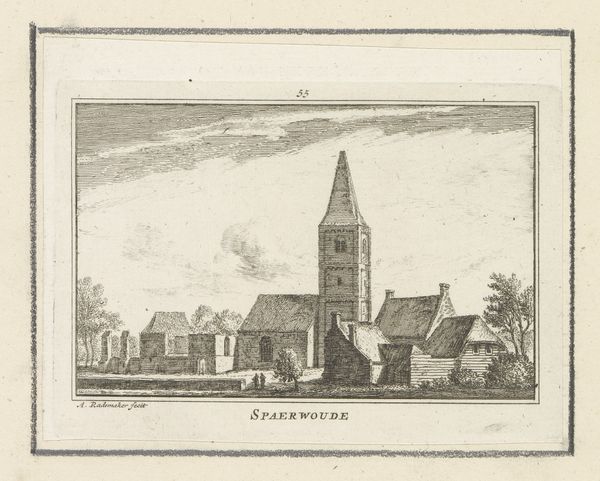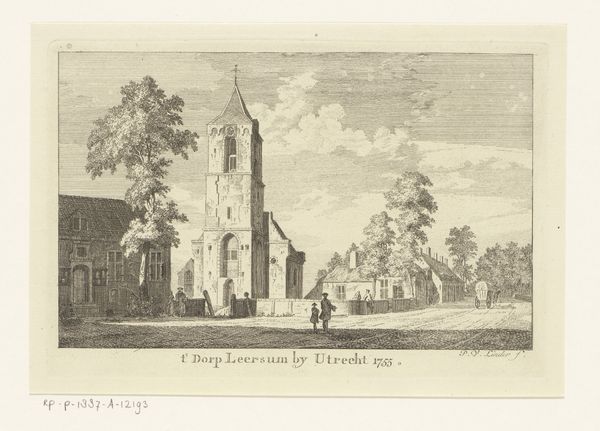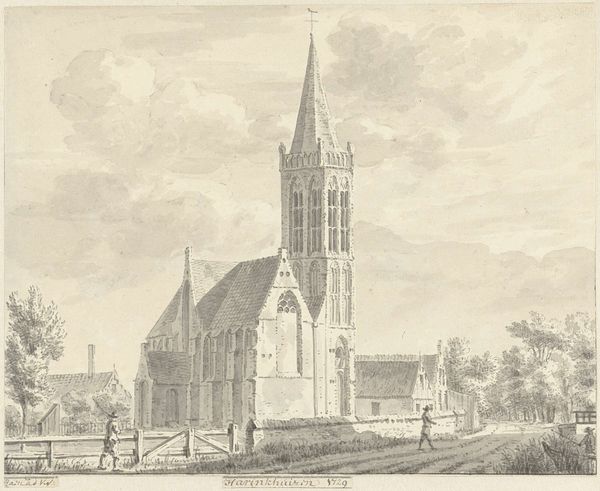
drawing, pencil
#
pencil drawn
#
drawing
#
baroque
#
dutch-golden-age
#
pencil sketch
#
landscape
#
pencil
#
cityscape
Dimensions: height 240 mm, width 312 mm
Copyright: Rijks Museum: Open Domain
Curator: Before us is "Gezicht op het dorp Nederlangbroek," or "View of the Village of Nederlangbroek," created by Pieter Jan van Liender in 1752. It's a pencil drawing offering a glimpse into the Dutch Golden Age's landscape sensibilities. Editor: My immediate thought is one of tranquility. The monochrome pencil work gives it this subdued, almost ghostly, feeling. It’s incredibly detailed but feels distant, somehow. Curator: Yes, it presents an interesting contrast, doesn't it? Van Liender was working during a time of significant social and economic stratification in the Netherlands. Village scenes like these played a crucial role in constructing and reinforcing the image of an ordered, stable society. Notice how the church dominates the landscape? Editor: Precisely! That church, its architecture rendered so meticulously in pencil, symbolizes a certain order and structure but it must be noted that rendering an entire vista into simple pencil work also speaks to a degree of economic privilege and access to those materials. Curator: A privilege further emphasized when we consider the patrons who would have commissioned such work— the elite landowners, projecting a sense of dominion. How they wanted the social structures of their world to look is crucial here. Editor: Indeed. Even the way the light and shadow play across the thatched roofs and figures hints at the materials available, and also how that era had certain levels of waste. A detailed sketch of the common working materials does hold a certain intrinsic importance as a record. Curator: The figures add another layer of interest. They are placed within the landscape to subtly reinforce class dynamics, notice their proximity and relative scale. Editor: It brings to mind the question of access, of course, since we cannot see much beyond what Van Liender wants us to, and this impacts our reading of social structures and the labour put into material processing. Curator: This work reveals to us not just a landscape, but the very mechanisms of societal self-representation and its patronage system in the 18th century. Editor: And the silent story told by the humble graphite pencil—an instrument of meticulous observation and social expression, echoing the subtle toil that went into this society that Liender recorded.
Comments
No comments
Be the first to comment and join the conversation on the ultimate creative platform.

